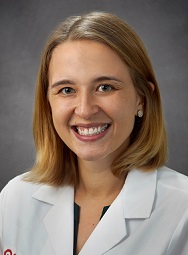“He’s way too smart—he should’ve gone into fellowship.”
That’s what an internal medicine resident said to me one weekend, referring to a colleague who had just signed on to join our hospital medicine division. I was taken aback. I’m a hospitalist—that’s what I’ve always wanted to be. Where was this mindset coming from? What hidden (or maybe not so hidden) curriculum was teaching our trainees that smart people go into fellowship, and those who can’t match become hospitalists?
I’m proud to be a hospitalist, and I’m proud to work at my hospital—an urban, 600+ bed tertiary care and level one trauma center. Our hospitalist group cares for over half of the hospitalized patients and is one of the largest divisions in the hospital. So why are we still battling outdated assumptions that we’re just dispo-jockeys who consult nephrology simply because a patient has kidneys?
The real question became: how do we change this narrative?
Our division has grown rapidly over the past few years. When I joined in 2019, we had about 100 physicians. Now we’re over 200 physicians strong, with 80 APPs and 10 administrative coordinators, staffing 12 hospitals across Southern New Jersey. But as we expanded, it became harder to stay connected. We realized we needed to build community- not just within our division, but with our colleagues and patients, too.
That’s how Cooper Hospitalist Day was born. For the past two years, we’ve celebrated it alongside National Hospitalist Day and SHM’s annual theme. Our celebration has three parts: a design competition, the Scholarly Symposium, and the Division of Hospital Medicine “Brag Book” presentation.
The design competition came from a slightly ridiculous but telling observation—we had zero division-specific swag. Our colleagues in trauma, the ED, the ICU, and respiratory therapy all had personalized jackets and shirts. We had nothing. With so many of us working across the hospital, wouldn’t it be great to recognize each other in the hallway—and show our pride to coworkers and patients?
Last year’s competition focused on a phrase that captured the spirit of hospital medicine. This year, it was a logo that represented who we are. Division members voted on the winning designs, which were printed on custom jackets and shirts. Now, when I wear mine, I get constant questions and compliments—from patients, families, and staff alike. It’s more than swag—it’s identity.
The Scholarly Symposium, held on Hospitalist Day, invites hospitalists, residents, and medical students to share posters from conferences, published work, or even works-in-progress. It’s a space to celebrate academic contributions and spark new collaborations. At last year’s event, two colleagues realized they’d both been working on care for patients with intellectual disabilities- opening the door for a joint grant project.
The Brag Book slideshow has quickly become a division favorite. Throughout the year, I collect photos of hospitalists participating in hospital events—our first Holi celebration, Women in Medicine panels, grand rounds, residency milestones, academic promotions, and awards. We include national achievements, poster presentations, happy hours, weddings, babies, vacations, college acceptances, pets—you name it. Fun trivia adds another layer: did you know we have 13 sets of twins/triplets (including parents of multiples and those who are multiples themselves)? Or that two of our hospitalists have toilet-trained cats?
This year, we added superlative awards like “Most Likely to Reply All,” “Sunshine Award,” and “Freudian Slipper.” It’s joyful, it’s personal, and it reflects who we are beyond the hospital floors.
These efforts have strengthened our community in meaningful ways—connecting a large, diverse team across multiple sites and showing the rest of the hospital just how much hospitalists contribute.
So no, I’m not “just” a hospitalist.
I’m a quarterback, a collaborator, a teacher, and a leader.
And I’m building community every step of the way.
2025 National Hospitalist Day HM Voices Contest Submission

Dr. Haroldson
Dr. Haroldson is an assistant professor of medicine at Cooper Medical School of Rowan University, an assistant program director of the internal medicine residency, and a site director for hospital medicine at Cooper University Health Care in Camden, N.J.